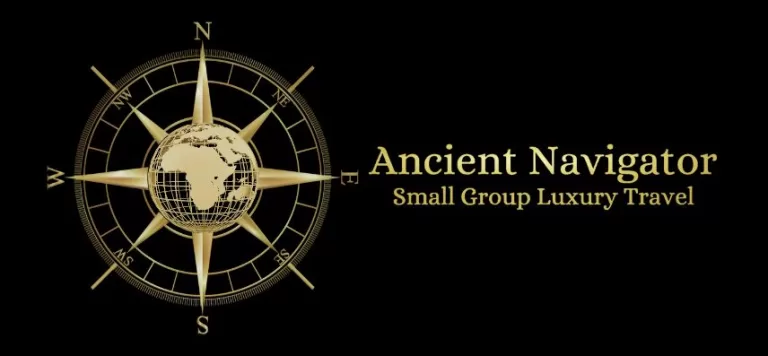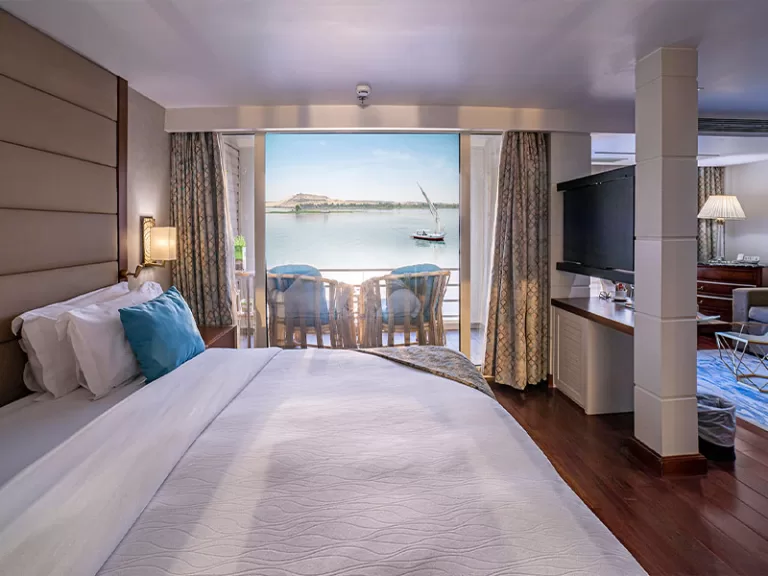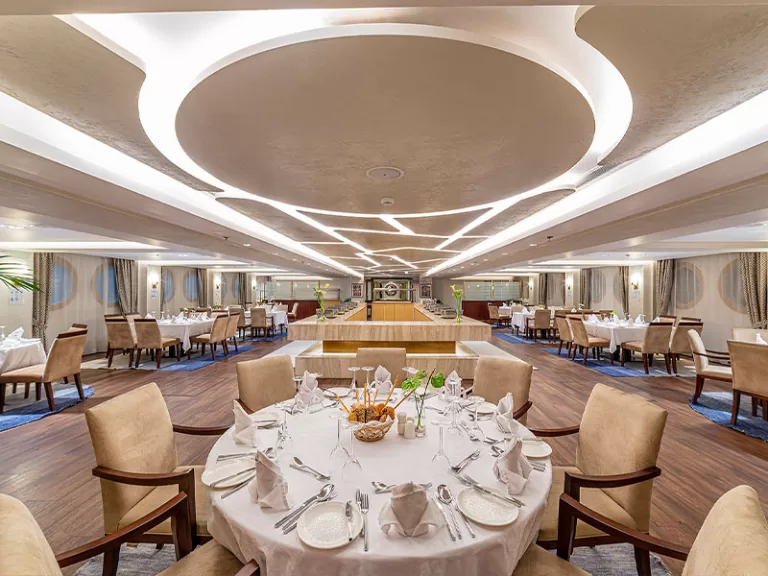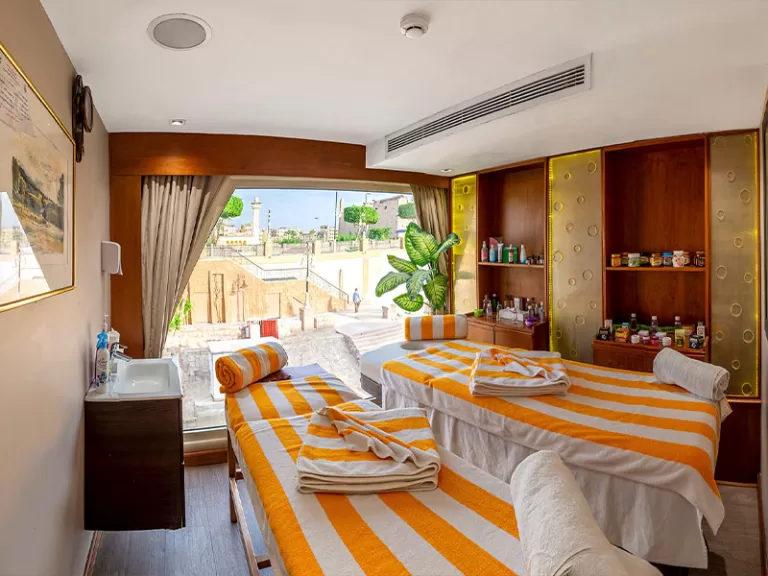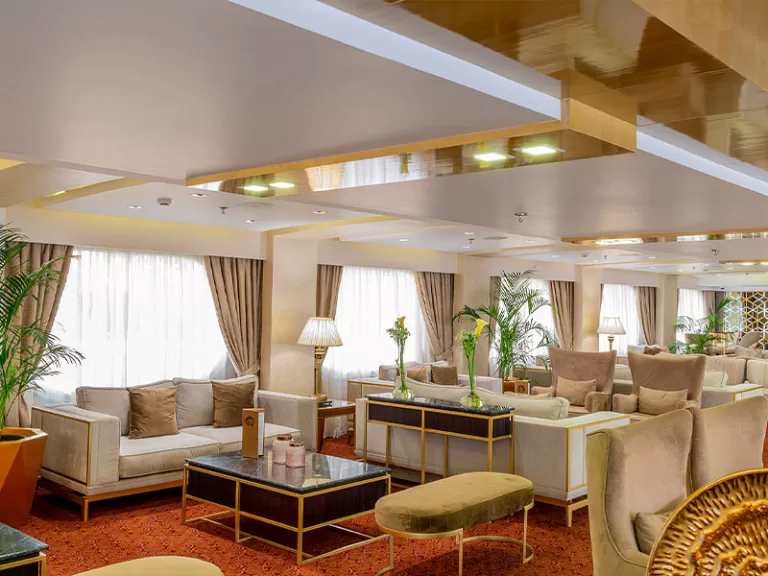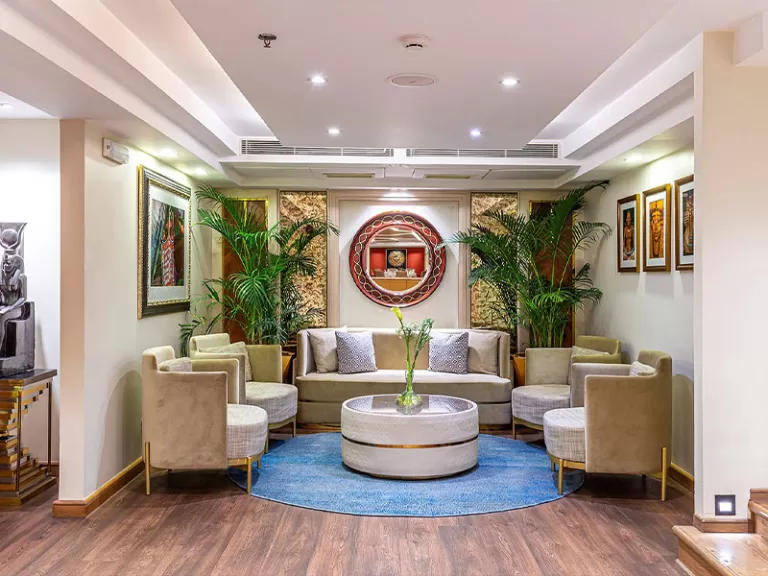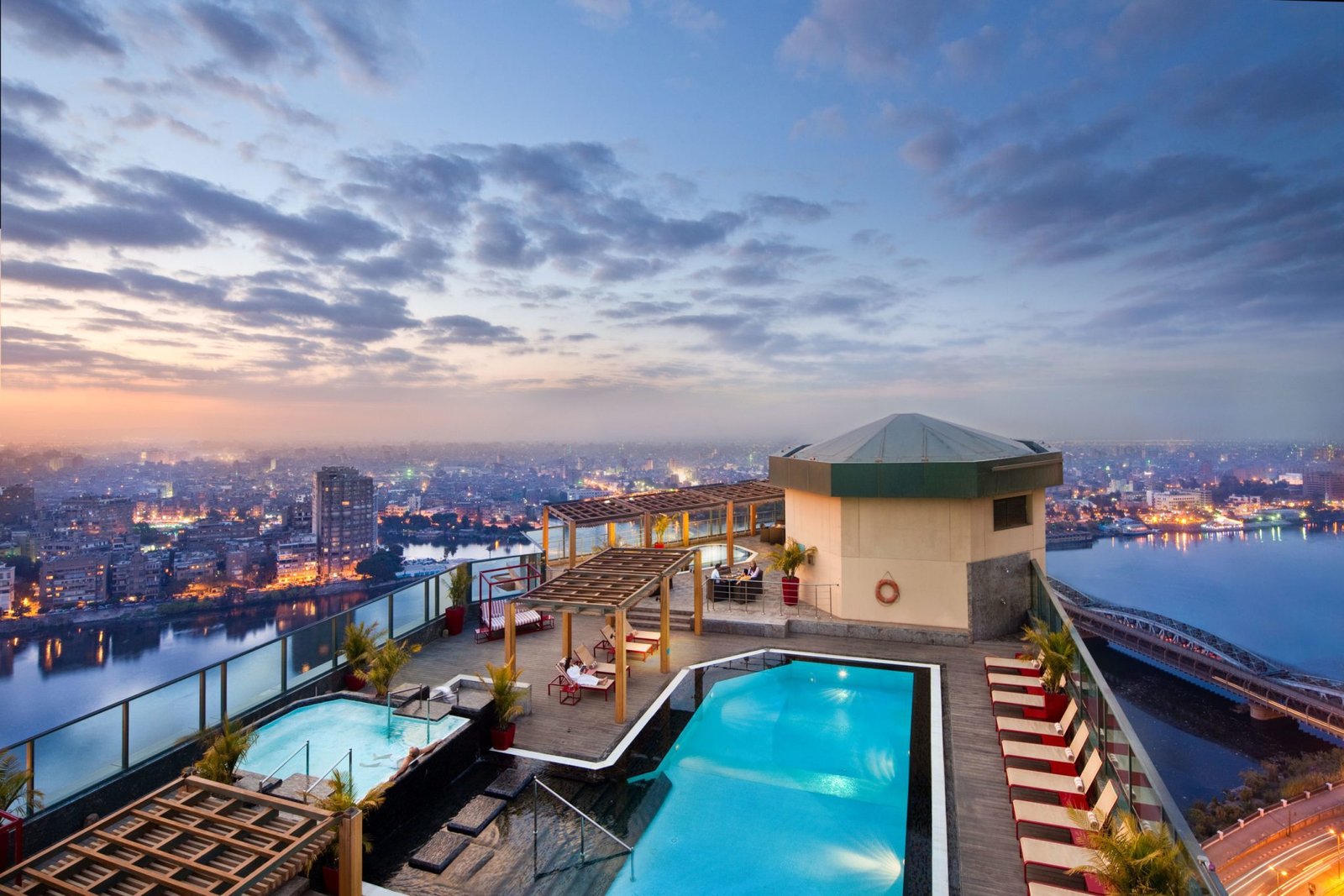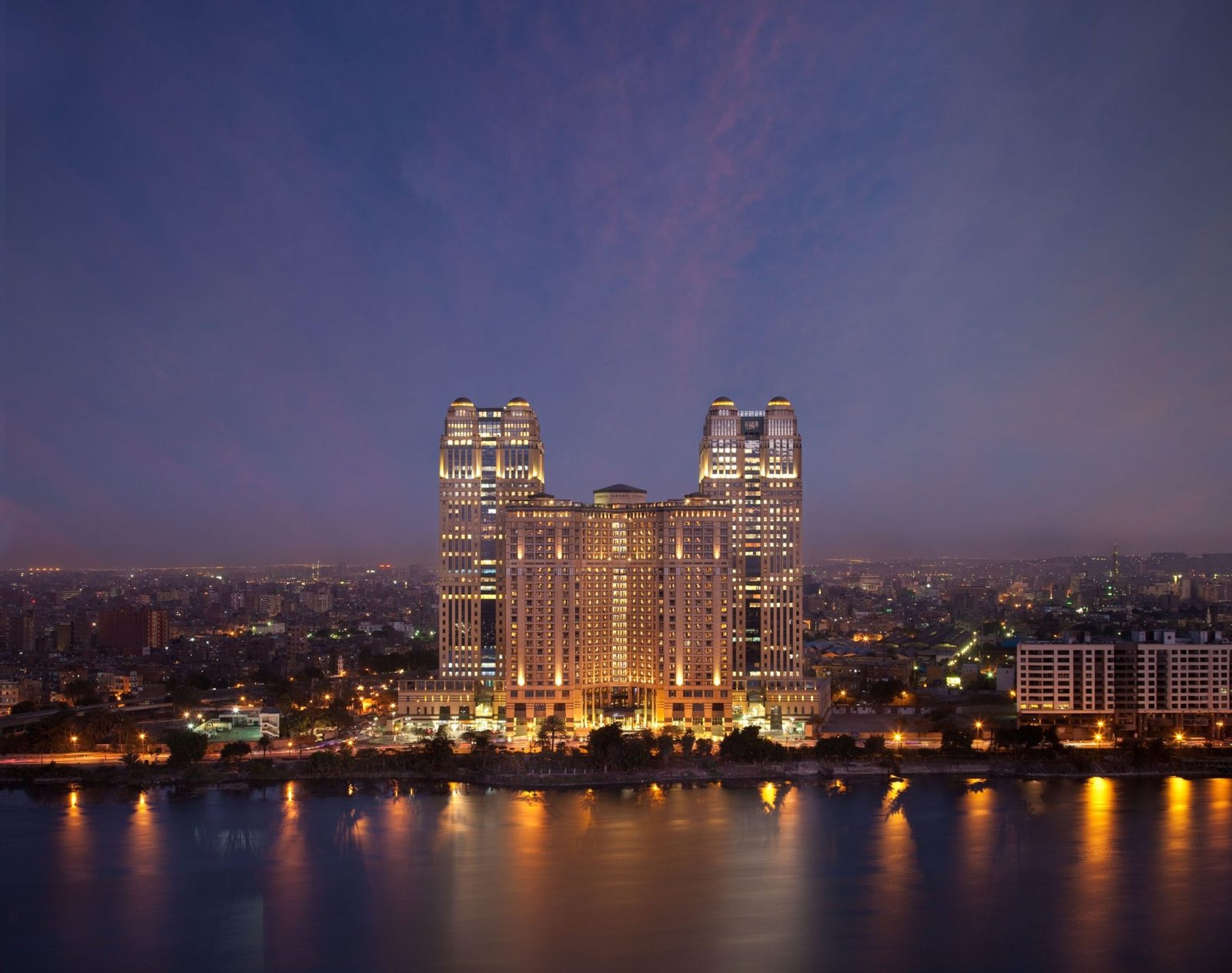The Hidden Egypt That Travel Agencies Don’t Want You to Know Exists
Table of Contents
There’s a reason everyone flocks to the Pyramids. They’re iconic. They’re enormous. They’re legendary. But here’s the unfiltered truth: if you stop your Egyptian adventure at the Pyramids, you’ve missed the entire soul of the country. The Giza Plateau is just the flashy front door. What lies beyond it is a series of ancient, awe-inducing, little-known marvels that redefine what it means to experience Egypt.
The kind of Egypt most travelers never see.
Imagine walking through temples with colors so vivid they make modern murals look dull. Imagine floating on a sailboat through desert silence while the Nile glistens beneath a golden dusk. Imagine standing in the middle of the desert, surrounded by natural sculptures made of chalk, carved by wind, under a sky so black with stars it feels like you’re on another planet.
That Egypt exists.
And the only people who get to see it are those who go beyond the pyramids.
TL;DR:
The pyramids are only scratching the surface. This guide reveals 7 of Egypt’s best-kept secrets—from ancient Persian temples in the desert to hidden tombs painted with forgotten histories. These are not tourist traps. These are real, raw, riveting experiences for travelers who crave more. If you want luxury, mystery, and meaning—you want what follows.
Key Takeaways: What You’ll Discover Here
Most people see Egypt’s past through a straw. The Pyramids and the Sphinx are like blockbuster films: big budget, big crowds, and worth a look. But if you want the director’s cut—the behind-the-scenes masterpiece—you need to go off-script.
The 7 hidden wonders of Egypt aren’t just places. They’re deeply emotional experiences. They are the secrets the ancients left behind, unspoiled by crowds and commodification.
Every destination in this post can be experienced in absolute luxury. We’re talking private guides, silent desert lodges, five-star feluccas, and curated cultural immersion. This isn’t backpacking. This is elite exploration.
You’ll learn not just what to visit, but why it matters. With history, cultural insight, and modern relevance woven into every site, this post arms you with the authority of a true Egypt insider.
And when you’re done reading, you’ll never look at a standard Egypt tour the same way again.
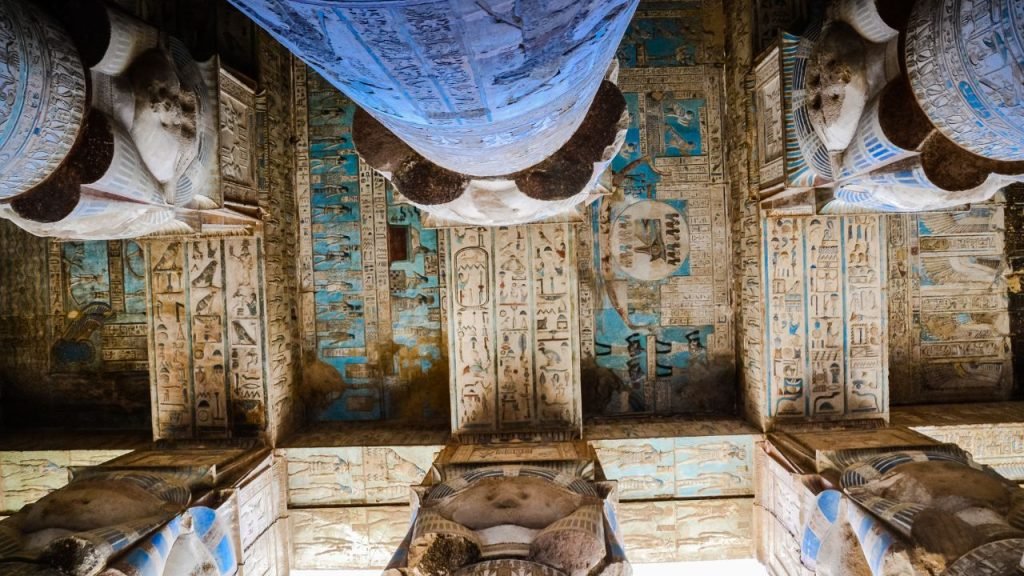
Dendera: The Sky Temple That Outsparkles the Pyramids
Tourists in Egypt follow a pattern. They come for the pyramids, they rush through Cairo, and maybe they stop at Luxor. But 60km north of Luxor sits Dendera—a temple complex so visually and spiritually overwhelming, it leaves even seasoned Egyptologists stunned.
The Temple of Hathor at Dendera is one of the best-preserved temples in all of Egypt. Its ceilings are still painted in the original celestial blue, depicting astronomical charts and constellations with a vividness that has defied 2,000 years of time. The Greeks came here. The Romans came here. Napoleon’s scholars etched their names in the stone walls—a crude tribute to the grandeur they found.
But what makes Dendera a true hidden gem isn’t just its state of preservation. It’s the access. You can climb to the rooftop, stand where ancient priests once performed rituals to the sky, and gaze across a horizon free from scaffolding or selfie sticks. Here, Egypt breathes in silence.
Luxury travelers can enjoy private evening access, with torches casting golden shadows along the colonnades. With a skilled guide, you’ll uncover hidden chambers beneath the temple—sealed for centuries and now open only to the deeply curious.
Siwa Oasis: The Egypt That Time Forgot
Tucked away near the Libyan border, hundreds of miles from the Nile, lies Siwa—a lush, green splash of paradise in the middle of a sand-colored sea. Most Egyptians have never even been here.
But Alexander the Great came.
Why? To consult the Oracle of Amun at the Temple of the Oracle—a mystical site older than even the Pyramids. According to legend, the oracle confirmed Alexander as the son of Zeus, changing the course of ancient history.
Today, Siwa remains an anomaly: a Berber town that speaks its own dialect, eats its own cuisine, and follows its own rhythms. The salt lakes are so dense you float like a feather. Cleopatra’s Pool, a spring-fed stone basin, invites you to swim where royalty once bathed. And everywhere, date palms whisper stories of centuries past.
For the discerning traveler, Siwa is Egypt’s ultimate detox: no noise, no rush, no nonsense. Just silence, stars, and an invitation to reconnect with something eternal. High-end eco-lodges offer solar-powered luxury among mud-brick architecture, while curated desert excursions take you to fossil-strewn dunes no one else will reach.
Tombs of the Nobles: The Forgotten Elite of Ancient Egypt
Aswan is known for its romantic Nile views and majestic feluccas, but few realize that just across the river, on a windswept hill, lies one of Egypt’s most fascinating sites: the Tombs of the Nobles.
These aren’t pharaohs. These were the administrators, governors, and poets of ancient Egypt—the real power behind the thrones. Their tombs are carved directly into the cliffside, overlooking the river they once controlled. The walls inside are inked with biographical inscriptions, family stories, and pastoral scenes you won’t find in the Valley of the Kings.
And unlike the Valley, you might have these tombs all to yourself.
You can arrive by private felucca, docking below the site, and ascend on foot as golden light spills over the sandstone. At the top: silence, panoramic Nile views, and the lingering sense that you are not just observing history—you are inside it.
Temple of Hibis: Egypt’s Persian Secret
Most people don’t associate Persia with Egypt. But during the 26th Dynasty, the Achaemenid Empire briefly took control. And they left a gift in the desert: the Temple of Hibis.
Found in the Kharga Oasis, this temple is one of the only surviving examples of Persian-era architecture in Egypt. Unlike other grand temples, Hibis is compact, stark, and utterly surreal—an ancient relic rising out of nothing.
Its painted ceilings and lotus-bloom columns echo Egyptian tradition, but its layout and inscriptions reveal a fusion of cultures. Zoroastrian fire rituals once burned here alongside Egyptian hymns to Amun. It’s a place where the world’s first empires collided.
And it’s empty. You’ll rarely encounter other visitors. For the luxury adventurer, we arrange custom caravan tours through the western oases, complete with campfire dining, astronomer guides, and Sahara-born hospitality.
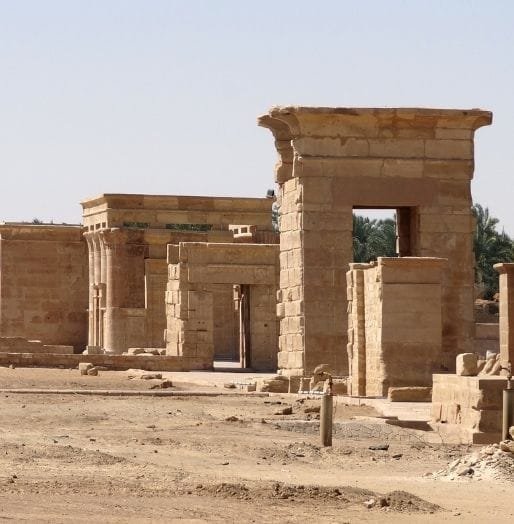
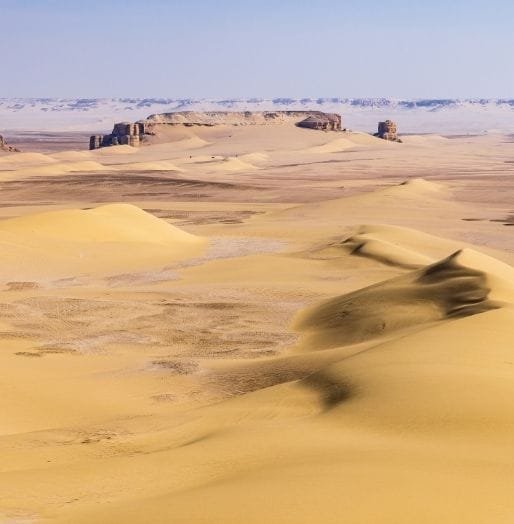
Wadi El Hitan: When Egypt Had Whales
You read that right. In the middle of Egypt, in a scorching desert called Fayoum, lies a valley filled with fossilized whales. Wadi El Hitan—”Valley of the Whales”—is one of the world’s richest paleontological sites, and a UNESCO World Heritage treasure.
These aren’t the whales you know. These are 40-million-year-old ancestors that still had legs. Their bones are perfectly preserved, scattered across the sand as if they just died last week. It’s a reminder that Egypt, long before it was the cradle of civilization, was an ancient ocean.
The experience of visiting Wadi El Hitan is pure surrealism. You traverse empty plateaus where silence reigns, stumble upon skeletons longer than buses, and learn how life evolved right here in the land of pharaohs.
Private guided expeditions include glamping under star-salted skies, paired with gourmet meals and a sunrise trek few have ever attempted.
Medinet Habu: The Fortress of a Warrior Pharaoh
Overshadowed by the fame of Karnak and Luxor Temples, Medinet Habu is a hidden masterpiece on the West Bank of Luxor. Built by Ramses III, this complex served as both a temple and a military fortress. And it shows.
Massive pylons rise like cliffs, adorned with intricate battle scenes and godly tributes. But it’s the details that haunt: decapitated enemies carved in stone, lists of tribute collected from conquered lands, and inscriptions warning future enemies to beware.
And here’s the kicker: the colors are still there. Vivid reds, blues, and yellows cling to the carvings, surviving centuries of sun, wind, and neglect.
Your private guide unlocks these scenes like a historian with a key. And if you arrive early enough, you might have the temple all to yourself. No tour buses. No shouting. Just the echoes of history.
The White Desert: Egypt’s Martian Playground
If you think deserts are just sand, prepare to be mind-blown. The White Desert, near Farafra, is unlike any landscape on Earth. Wind and time have sculpted chalk rock into surreal shapes—mushrooms, towers, sphinx-like guardians—dotting a bone-white landscape that looks lunar.
By day, the desert blinds with its brightness. By dusk, it glows orange and lavender. And by night? The stars explode. You see galaxies with your naked eyes.
Our expeditions here redefine luxury. Private 4x4s, Bedouin chefs, insulated glamping tents, telescopic stargazing, and silence so deep it rearranges your mind. This is not a detour. It is the highlight of a lifetime.
This Isn’t Tourism. It’s Transformation.
Every traveler who comes to Egypt leaves changed. But those who go beyond the pyramids? They come back reborn. Because there’s something different about standing where pharaohs walked, swimming where Cleopatra bathed, or sleeping beneath the stars where whales once swam.
And make no mistake: these experiences are not in the brochures of mass-market agencies. They aren’t offered on your average cruise itinerary. These are sacred secrets, revealed only to those bold enough to ask for more.
At Ancient Navigator, we specialize in the more.
Private access. Curated luxury. Academic insight. Emotional depth.
Your Next Step: Escape the Ordinary
If you’re ready to go beyond Instagram snapshots and into the living, breathing heart of Egypt—then it’s time to travel with those who know the way.
Request your private consultation today. Let us craft a journey tailored to your passions, your pace, and your desire to see Egypt as it truly is.
Don’t just take a vacation.
Take a pilgrimage.
Join our Email List
About the Author

James
A passionate traveler and writer who loves exploring the world, discovering new places, savoring unique foods, and connecting with fascinating people. Through their writings, James shares personal experiences and stories from every corner of the globe, with the hope that others can one day embark on these adventures for themselves. Whether it's about a hidden gem of a destination or a culinary delight, James's goal is to inspire and spark a sense of wanderlust in their readers.

James
A passionate traveler and writer who loves exploring the world, discovering new places, savoring unique foods, and connecting with fascinating people. Through their writings, James shares personal experiences and stories from every corner of the globe, with the hope that others can one day embark on these adventures for themselves. Whether it's about a hidden gem of a destination or a culinary delight, James's goal is to inspire and spark a sense of wanderlust in their readers.
Past Blog Posts

Planning a Trip to Egypt? Here’s How Long You Need
Think you can “do” Egypt in 3 days? Think again. From ancient tombs to Nile-side secrets, this guide reveals why the magic of Egypt demands more than a layover—and shows you exactly how many days you really need to make it unforgettable. Don’t book that flight until you read this.

How Far Does $100 Go in Egypt?
Think $100 won’t get you far? In Egypt, it’s a game-changer. From luxury hotels to mouthwatering meals and ancient wonders, see how far your dollar really goes. This guide breaks down real costs, insider tips, and jaw-dropping experiences you can afford—without breaking the bank.
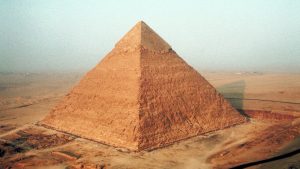
Private Egyptologist Tours: Unlock Egypt’s Hidden Secrets in Luxury
Step beyond the velvet ropes of Egypt’s most iconic sites. With a private Egyptologist as your guide, you’ll uncover hidden chambers, untold stories, and experience ancient wonders far from the tourist crowds. This is discovery at its most exclusive—where history meets luxury.

